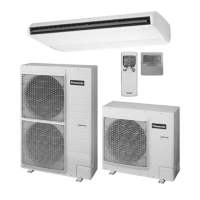
Do you have a question about the Panasonic CS-D34DTQ and is the answer not in the manual?
| Brand | Panasonic |
|---|---|
| Model | CS-D34DTQ |
| Category | Air Conditioner |
| Language | English |
Troubleshooting guide for issues found during test operations, focusing on address settings.
Important safety notice regarding actions during the initial test operation period.
Warning about the automatic address setting process and unit interchangeability.
Details the applicable voltage and indoor/outdoor temperature ranges for unit operation.
Highlights features related to the indoor unit's ceiling type installation and maintenance.
Describes the advantages and design aspects of the outdoor unit for installation.
Details the features and benefits of the wired remote control unit.
Details the features and benefits of the wireless remote control unit.
Explains the capabilities and configurations for group control systems.
Comprehensive technical specifications for the CS-D34DTQ/CU-D34DBQ7 model at 50Hz.
Comprehensive technical specifications for the CS-D34DTQ/CU-D34DBQ7 model at 60Hz.
Comprehensive technical specifications for the CS-D43DTQ/CU-D43DBQ7 model at 50Hz.
Comprehensive technical specifications for the CS-D43DTQ/CU-D43DBQ7 model at 60Hz.
Comprehensive technical specifications for the CS-D50DTQ/CU-D50DBQ7 model at 50Hz.
Comprehensive technical specifications for the CS-D50DTQ/CU-D50DBQ7 model at 60Hz.
Details the various safety mechanisms incorporated into the indoor and outdoor units.
Provides detailed dimensional drawings and measurements for the indoor unit.
Provides detailed dimensional drawings and measurements for the outdoor unit.
Diagram illustrating the refrigeration cycle for the CS-D34DTQ/CU-D34DBQ7 model.
Diagram illustrating the refrigeration cycle for multiple models.
Electrical block diagram for the indoor units.
Electrical block diagram for the outdoor units.
Detailed wiring diagram for the indoor units.
Detailed wiring diagram for the outdoor units.
Explains the functions and usage of the wired remote control.
Details the information displayed on the remote control screen and its meaning.
Illustrates and describes the function of each button on the remote control panel.
Step-by-step guide on setting the current day and time on the remote control.
Guide on selecting between daily and weekly timer modes for operation.
Instructions for setting the daily timer for automatic operation.
Instructions for setting the weekly timer for automatic operation.
Explains the functions and usage of the wireless remote control unit.
Describes how to perform and the parameters of cooling operation.
Explains the soft dry operation mode for dehumidifying the room.
Details the auto operation mode, which adjusts based on air temperature.
Explains how to control the fan speed and operation.
Covers thermostat control, indoor fan speed, and odour cut functions.
Instructions for using the odour cut function to remove odors.
Describes the freeze prevention mechanism to protect the unit.
Explains the dew form prevention control during cooling operation.
Details how to adjust the louver angle for airflow direction.
Explains how the outdoor fan speed is controlled based on temperature.
Describes the energy saving operation mode and its activation.
Procedure for performing a test run after installation.
Information on valve error detection during test run and its causes.
Procedure for performing a pump down operation for refrigerant recovery.
Guidance on calculating and correcting cooling capacity based on pipe length.
Instructions for adding refrigerant based on piping length and model.
Provides the center of gravity specifications for outdoor units.
General precautions and steps for installing the indoor unit.
Lists the accessories included with the indoor unit for installation.
Criteria and recommendations for choosing the optimal indoor unit installation location.
Detailed instructions for the physical installation of the indoor unit.
Step-by-step guide for disassembling parts of the indoor unit for installation.
Instructions for brazing and connecting refrigerant pipes.
Guidance on installing the drain piping for the indoor unit.
Instructions for applying heat insulation to pipes to prevent condensation.
Procedures and safety precautions for electrical wiring connections.
Configuration settings for group control and address settings.
Details on connecting the timer cord for the control board.
Safety guidelines and procedures for conducting test runs.
Checklist for verifying installation quality and functionality.
Procedures for demonstrating operation and maintenance to the customer.
Lists the accessories provided with the outdoor unit for installation.
Instructions on how to properly handle and lift the outdoor unit.
Criteria for choosing an appropriate and safe location for the outdoor unit.
Guidelines for safely transporting and installing the outdoor unit.
Detailed steps for connecting the refrigerant pipes between units.
Important notes and precautions for connecting refrigerant pipes correctly.
Instructions for applying heat insulation to refrigerant pipes for optimal performance.
Procedure for charging the system with refrigerant, including additional amounts.
Procedures and safety warnings for connecting the main power supply.
Safety guidelines and procedures for conducting test runs on the system.
Troubleshooting common issues encountered during standard unit installation.
Specific troubleshooting steps for problems occurring during twin operation.
Troubleshooting common issues in group control configurations.
Guides on performing test operations and interpreting self-diagnosis results.
Procedure for performing a forced cooling test run.
Steps for initiating test operation using the outdoor unit controls.
Instructions for performing test operation via the wired remote control.
Explanation of the self-diagnosis system and how to read error codes.
Procedure for initiating test operation using the wireless remote receiver's auto button.
How to operate the unit in emergency mode when the remote controller is unavailable.
A comprehensive table mapping error codes to their causes and locations.
Tables showing cooling capacity and power consumption under various conditions.
Graphs illustrating cooling capacity and power consumption trends.
Cooling capacity and power consumption data for CS-D34DTQ (50Hz).
Cooling capacity and power consumption data for CS-D43DTQ (50Hz).
Cooling capacity and power consumption data for CS-D50DTQ (50Hz).
Charts showing the air throw distance at different fan speeds and heights.
Diagrams indicating the standard positions for sound level measurements.
Octave band sound pressure level data for various models and fan speeds.
Data on air volume, running current, and fan speed for different models.
Graphs showing saturation temperature vs. discharge and suction pressure.
Performance data for cooling only models, including starting and running currents.
Exploded view diagram of the indoor unit components.
Second part of the exploded view for indoor unit components.
Third part of the exploded view for indoor unit components.
Printed circuit board layout for the main indoor unit control.
Printed circuit board layout for the indoor unit indicator section.
Printed circuit board layout for the main outdoor unit control.

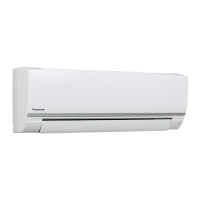
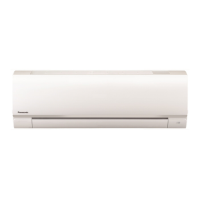
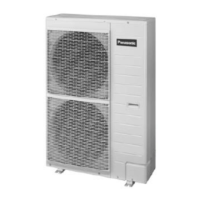
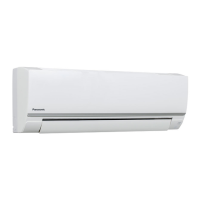
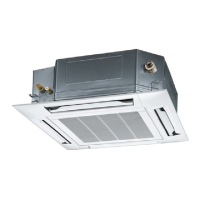

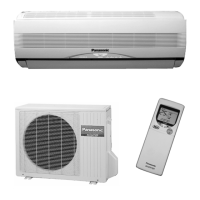
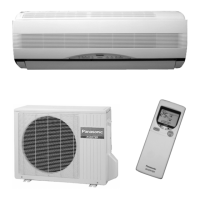
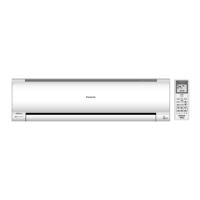
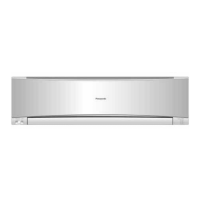
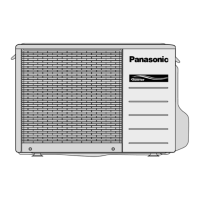
